Restyle: Hoard Styles, Not Clothes
Objective: The fashion industry is one of the most polluting industries in the world. A third (33%) of Gen Z feel stressed that they’ve spent more than they can afford when they buy new clothes. With low awareness of the impact of fast fashion on the environment and people and the buying of clothes so closely linked to mood and happiness, how can we engage young people (Generation Z) in being more mindful clothes shoppers?
Process: Desk Research, User Research, Interviews, Engagement Tools, Analysis and Synthesis, Insights generation, Ideation Workshop, Business Model, Value Proposition, Prototype, Concept Directions, and Development.
Solution: ReStyle, a digital platform that empowers consumers to curate & style with a limited wardrobe & nurture conscious shopping habit. It empowers them to develop their own unique style using their existing fashion items with suggestions from an AI-enabled stylist or peers.
Learnings: Our research showed that there is a growing number of youngsters who are aware of the effects of fast fashion and wish to change their shopping behavior. People are unable to purchase more sustainable clothing brands due to access issues – price, availability, trust, and visibility. The creation of quasi seasons by fast fashion brands along with the ubiquitous presence of social media has pushed the demand for impulse purchases even higher, leading to an unsustainable production-consumption cycle.
Time: 3 weeks
Role: Service Designer, Design Strategist, Customer Experience Designer
Team: I collaborated with Pragya Singh (GU, Business & Service Design) and Shalin Shah (CIID, Interaction Design) on a student competition Hubbub Design by Nature: Fast Fashion Living Briefs.
Desk Research:
Methods used: Reports, Research Papers, Research Mapping, Quick Dip
Awareness Insight
When asked what the term ‘fast fashion’ means, more than half (58%) of Gen Z did not know. Just over a third of all women (35%) knew the correct definition for ‘slow fashion’. (WoolOvers, 2019)
Impact Insight
Fast fashion is when cheap clothes, inspired by trends (there are now over 52 micro seasons a year with new clothes every week!), are made quickly and it’s having a negative impact on our environment.
Behaviour Insight
There’s pressure to have new clothes. 1 in 6 young people say they feel they can’t repeat outfits once it’s seen on social media. We throw away 11 million clothing items a week. (Oxfam 2019)
Positive Change Impact
Second-hand and resale is growing. Second-hand apparel market to double in 5 years. As a market, it will be larger than fast fashion within 10 years. (Threadup Resale Report, 2019)
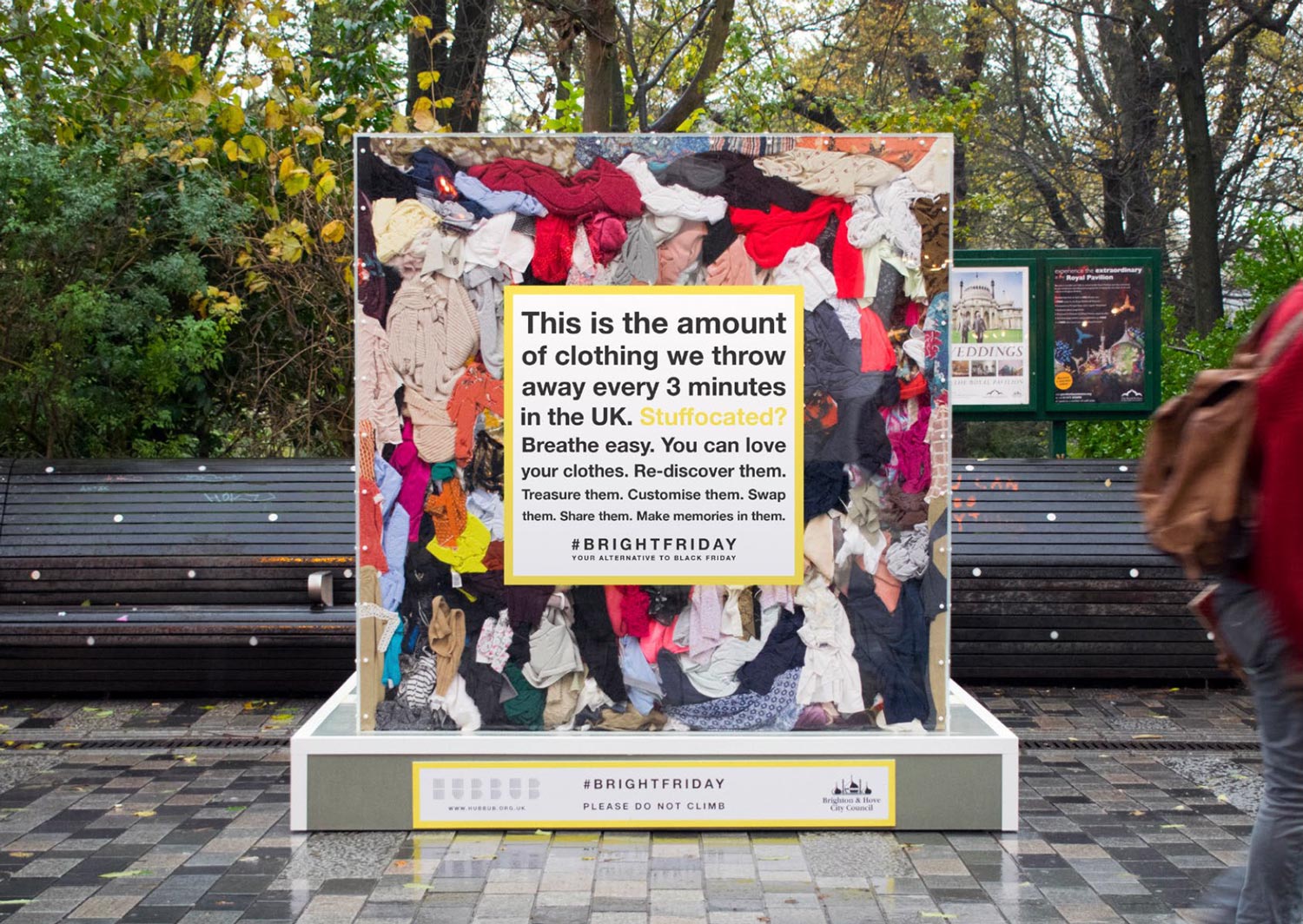
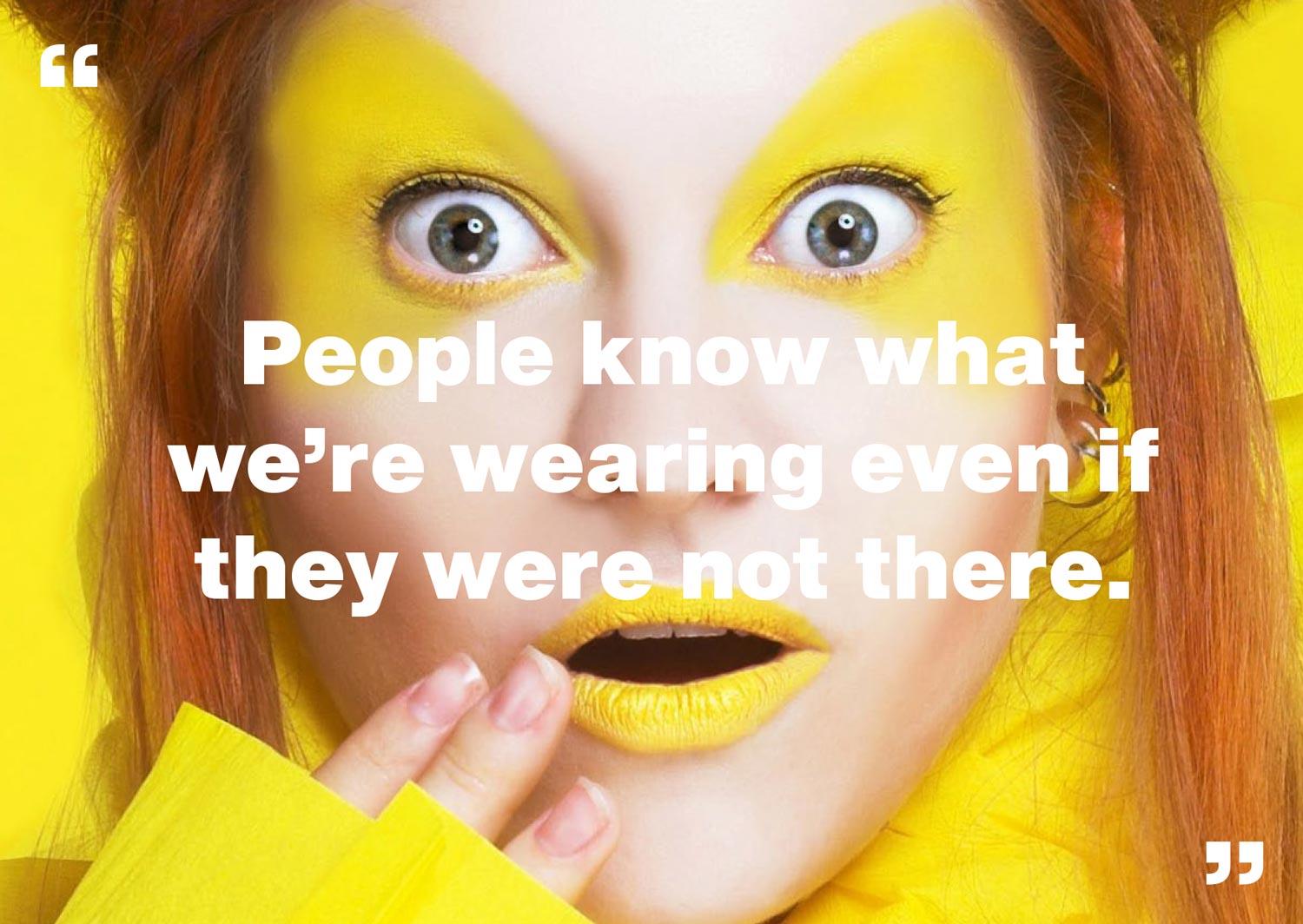
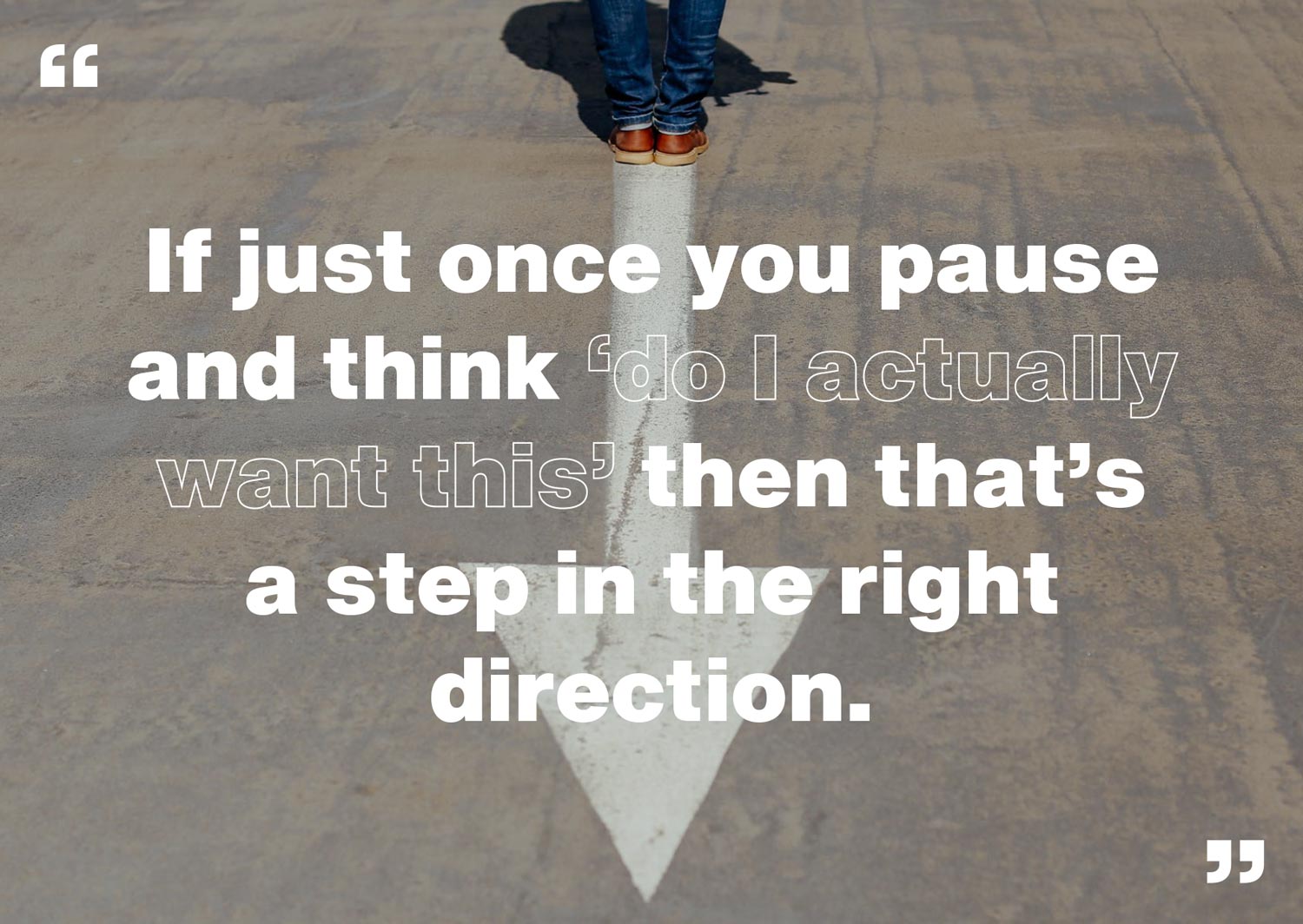
Primary Research:
Methods used: Interviews, 5 Why’s, Probes, Co-creation Workshops, Insights & Analysis, Persona Generation
We conducted 5 in-depth online interviews to understand Gen Z’s shopping habits. We asked them to give us an estimate of the number of clothes they think they own & then to actually count them. We also spoke to buyers of fashion labels to understand fast fashion trends & systems.
Analysis & Synthesis:
We made mind maps to analyse the shopping patterns and gain insights into the pain points of a shopper. We developed personas based on our insights to help us empathise with the user. We enlisted HMW statements to find opportunities, gaps and unmet needs of the user. Once we framed the HMW we used idea generation techniques like crazy 8s, and then brainstorming sessions build upon each other’s ideas. We also used the business canvas model to identify our priorities, strengths, and weakness.
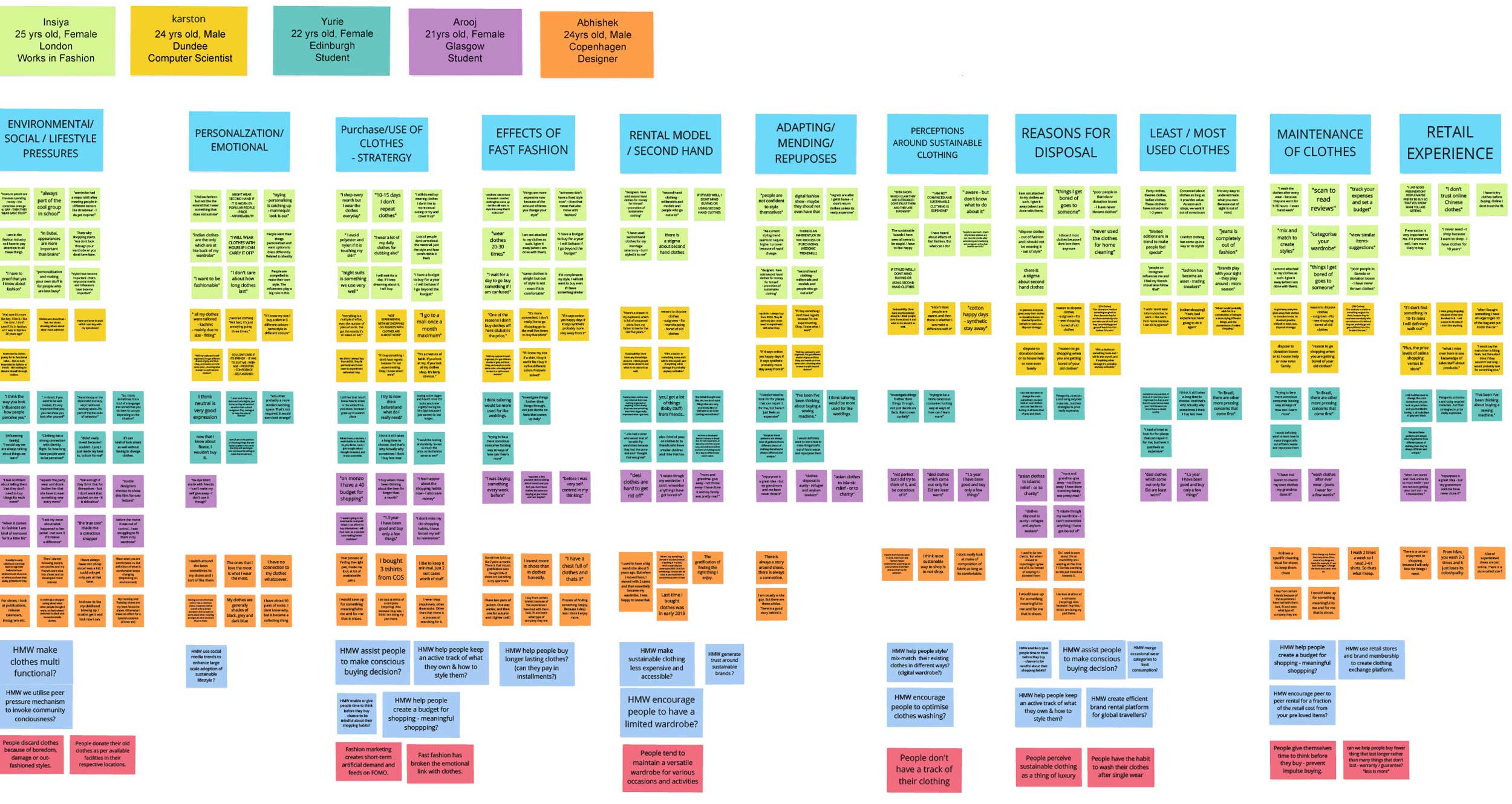

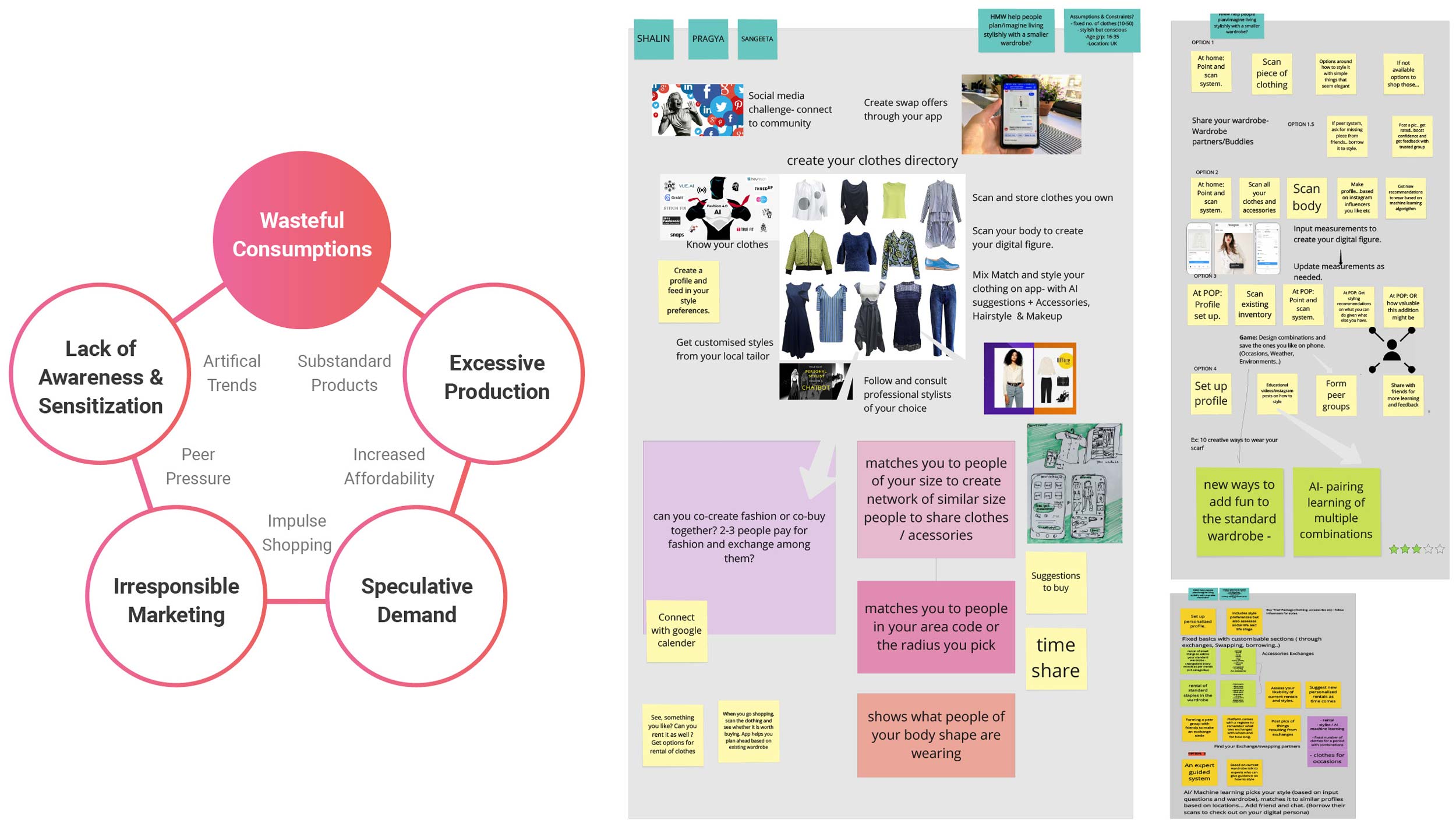
Interesting Insights:

Stylish yet budget-conscious consumers rely on timeless fashion items and refresh their styles with accessories and small tweaks.

People often underestimate the number of clothes they own. They tend to forget less-used items and continue buying new stuff.

People’s inability/lack of confidence to create different styles from their existing wardrobe leads them to get bored of their clothes faster.

Sustainable brands are considered unaffordable. There are also trust issues regarding the authenticity of these brands.

People consider fashion as a way to express their identity but are not confident about styling their own clothes.

Current options for customization and personalisation are expensive, time-consuming and inconvenient
We were particularly drawn to:
The tension between this desire to be conscious and also to stay fashionable.
People who want to be sustainable think the best way is to own less and not worry about style
v/s
People who do not want to give up on style, currently see no option but to invest in fast fashion, especially if they are on a budget.
HMW Statements:
HMW help Gen Z experience the thrill of shopping while reducing their overall consumption?
HMW help create awareness and excitement around sustainable lifestyle so that people see them as viable purchase options but not moral choices?
HMW encourage people to use alternatives to new clothes?
HMW we help users become more aware of their existing wardrobe at the time of purchase, to resist the bias of underestimating their inventory?
HMW help style-conscious users remain excited about their current wardrobe even as new styles/clothes become available?
HMW help people create a budget or time to think before they buy, a chance to be mindful about their shopping habits?
HMW we help willing customers gradually adapt to a more sustainable lifestyle (fashion) to minimize their sense of sacrifice/giving up?
HMW help people express their identity and personality sustainably?
HMW help people plan/imagine living stylishly with a smaller wardrobe?
Ideation:
Our research showed that, there is also a growing number of youngsters who are aware of the effects of fast fashion and wish to change their shopping behaviour. However, many of them are unable to purchase more sustainable clothing brands due of access issues – price, availability, and visibility. Limiting wardrobe size is their only real option. For a lot of them, this means sacrificing the process of developing their own unique individuality through styling. This did not seem like a sustainable strategy.
Persona Development:
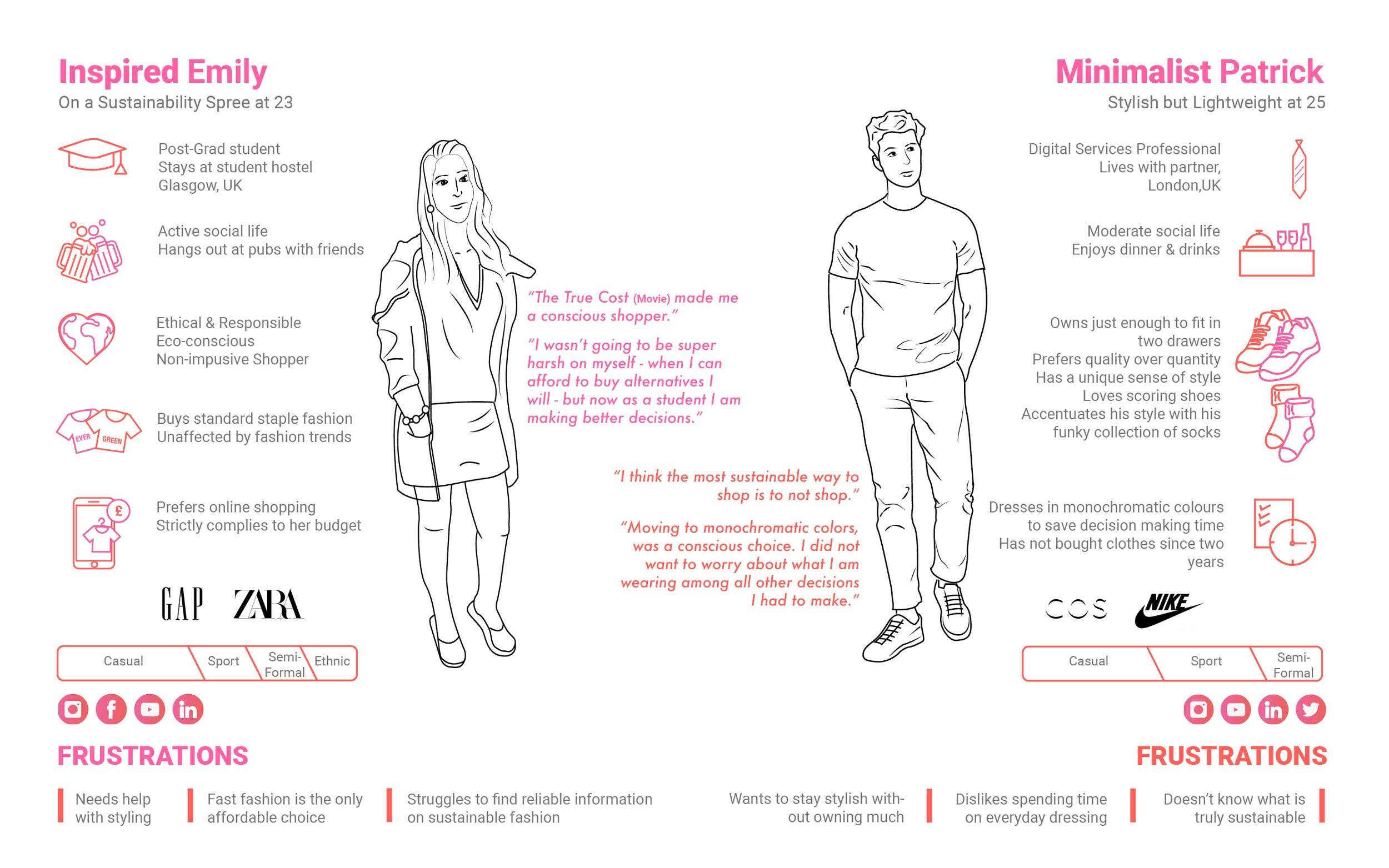
How Might We help people plan/imagine living stylishly with a small wardrobe?
Value Proposition Canvas:
Based on our target user’s frustrations we see an opportunity for a platform to enable our target users to curate and style with a limited wardrobe and nurture conscious shopping behaviours.
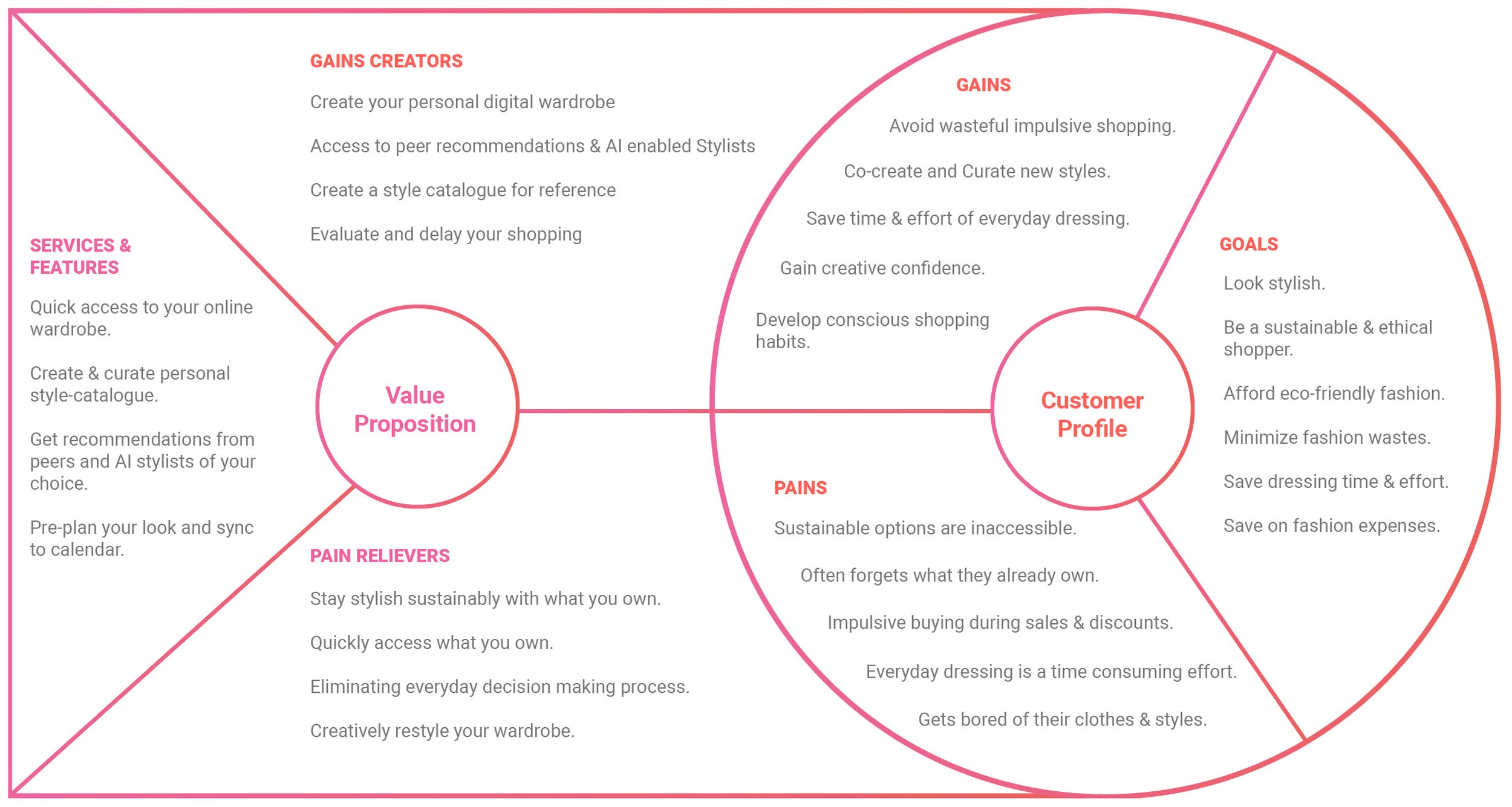
Concept:
We were particularly drawn to the tension between the desire to be a conscious shopper and also to stay fashionable. We wanted to create a platform that capitalises on this gap and empowers users (Gen Z and young adults) to develop their own unique style using their current wardrobe. This was based on 2 other insights uncovered by our research: (a) A lot of fast fashion relies on small changes to their collections to make it seem different, and (b) Stylish budget conscious consumers often rely on small accessories and minor tweaks (different coloured socks, scarves, earrings, shoes etc) to develop their own unique style.
We also enlisted the values and goals that we would like to introduce in our design.
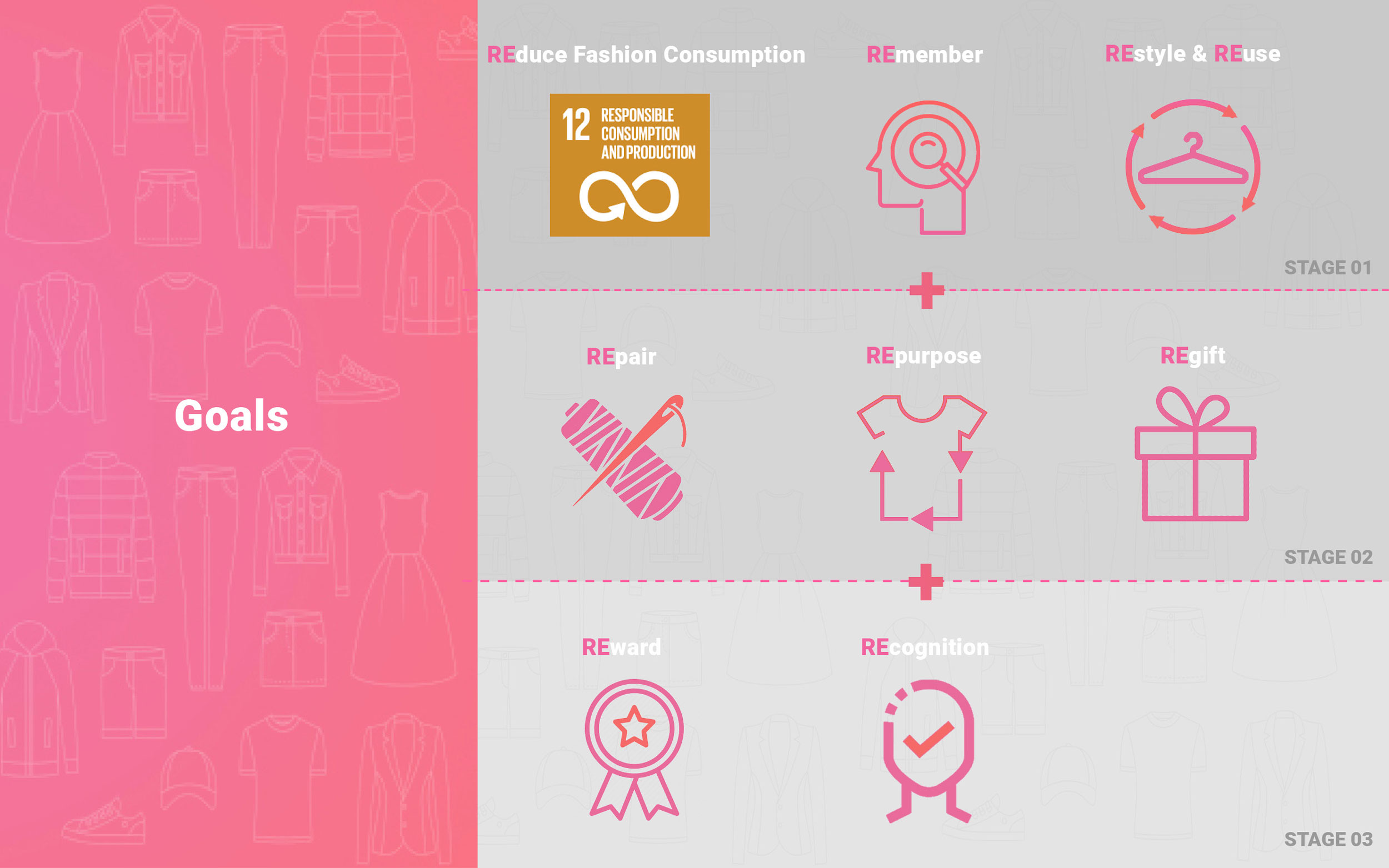
Design:
Inspired by these, ReStyle is a digital platform that empowers consumers to curate & style with a limited wardrobe & nurture conscious shopping habits. It empowers them to develop their own unique style using their existing fashion items with suggestions from an AI-enabled stylist or peers. This will help users avoid their wasteful/impulse shopping while being more confident in styling themselves with less.
Touchpoints:
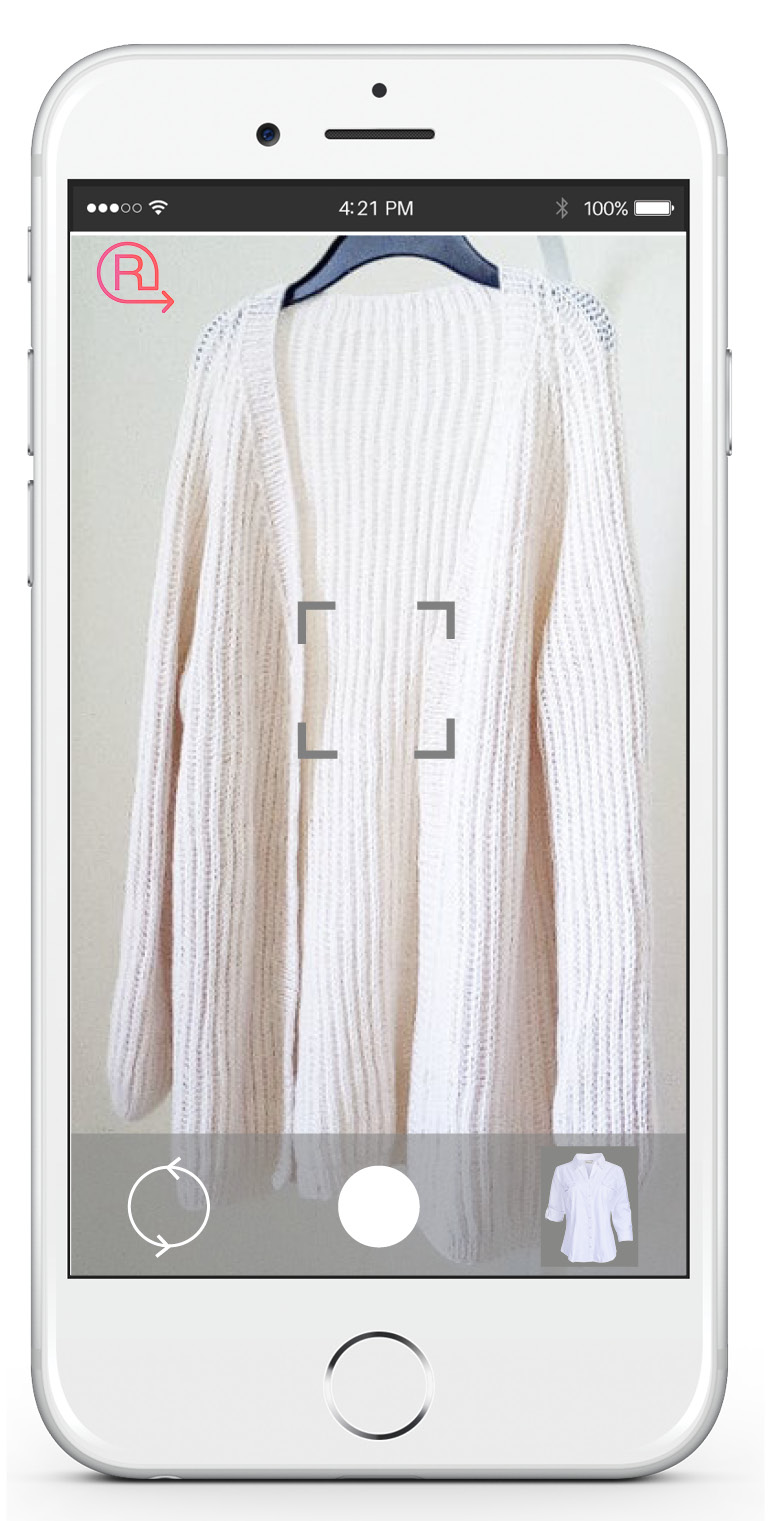


Capture & Save:
A key feature of the platform is giving users the ability to upload their wardrobe digitally. They can click / scan/tag and save pictures of their fashion items to create a personal digital catalog.

View Anytime / Anywhere:
At a basic level, this gives the users access to their wardrobe anytime, as well as an easy way to experiment with various styling options within their existing wardrobe. They can quickly access and check everything they already own to make an informed decision to avoid impulse buying.
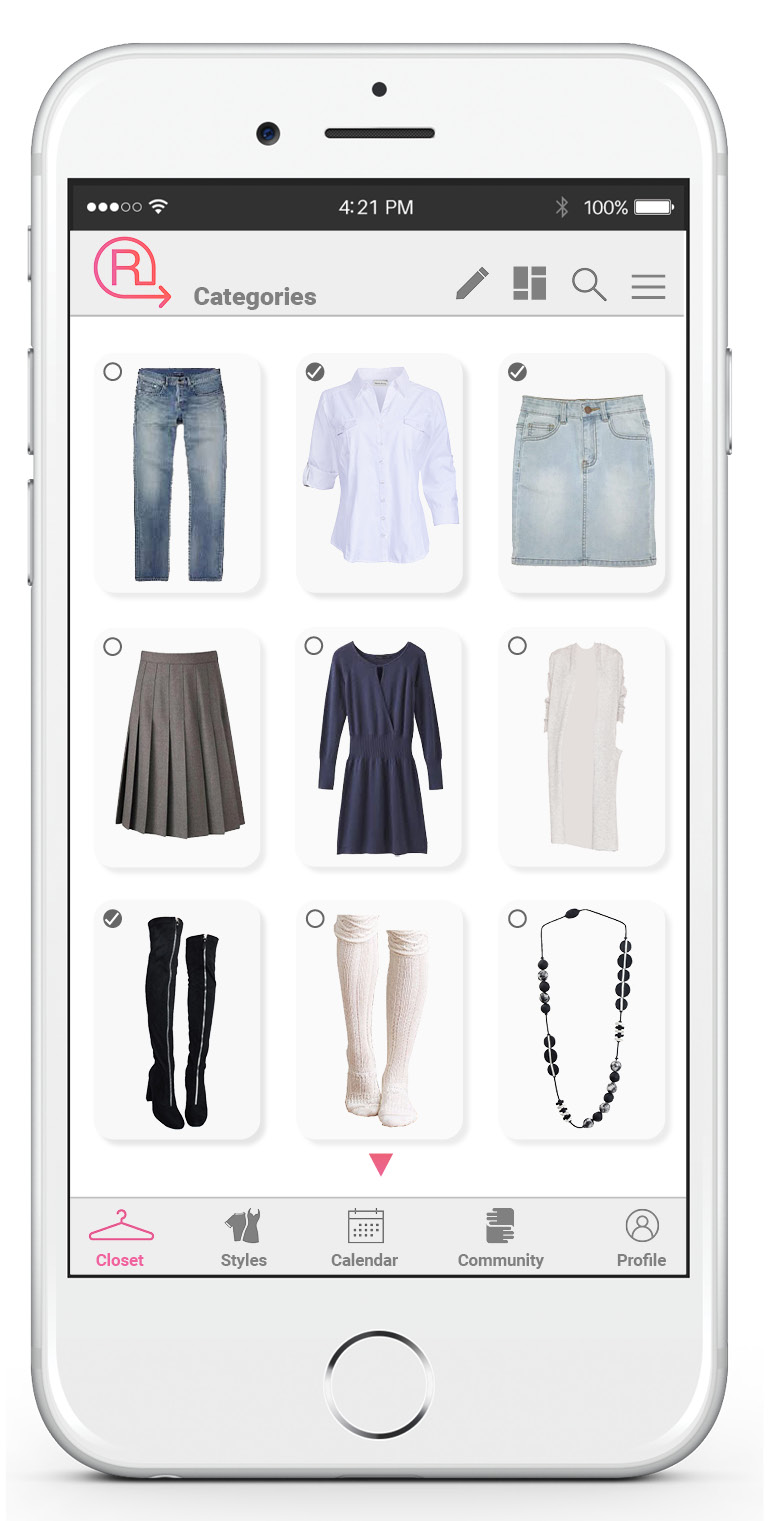
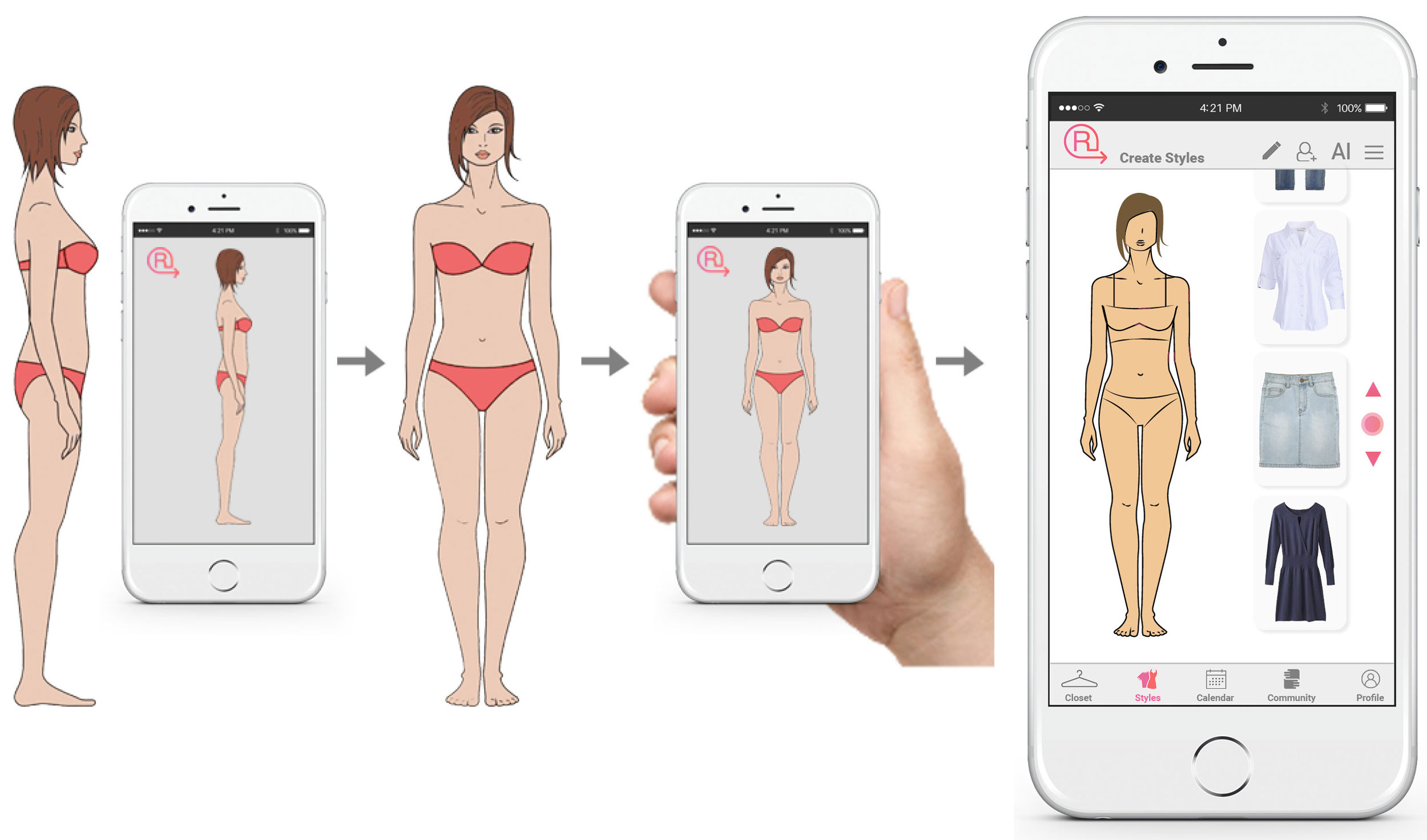

Body Scan:
The user can create their digital avatar by the body scan and feeding in their body measurements, select hairstyles, and skin tone. They can modify and update as needed.

Create / Curate Styles:
Mix & match by dragging and dropping items from your catalog to create and save new styles for future reference. Share with friends and stylists and co-create styles or borrow/lend their fashion items. Machine learning to offer AI-enabled stylists that may suggest styles based on the user’s preferences, wardrobe, and/or what they can find sustainably and locally.

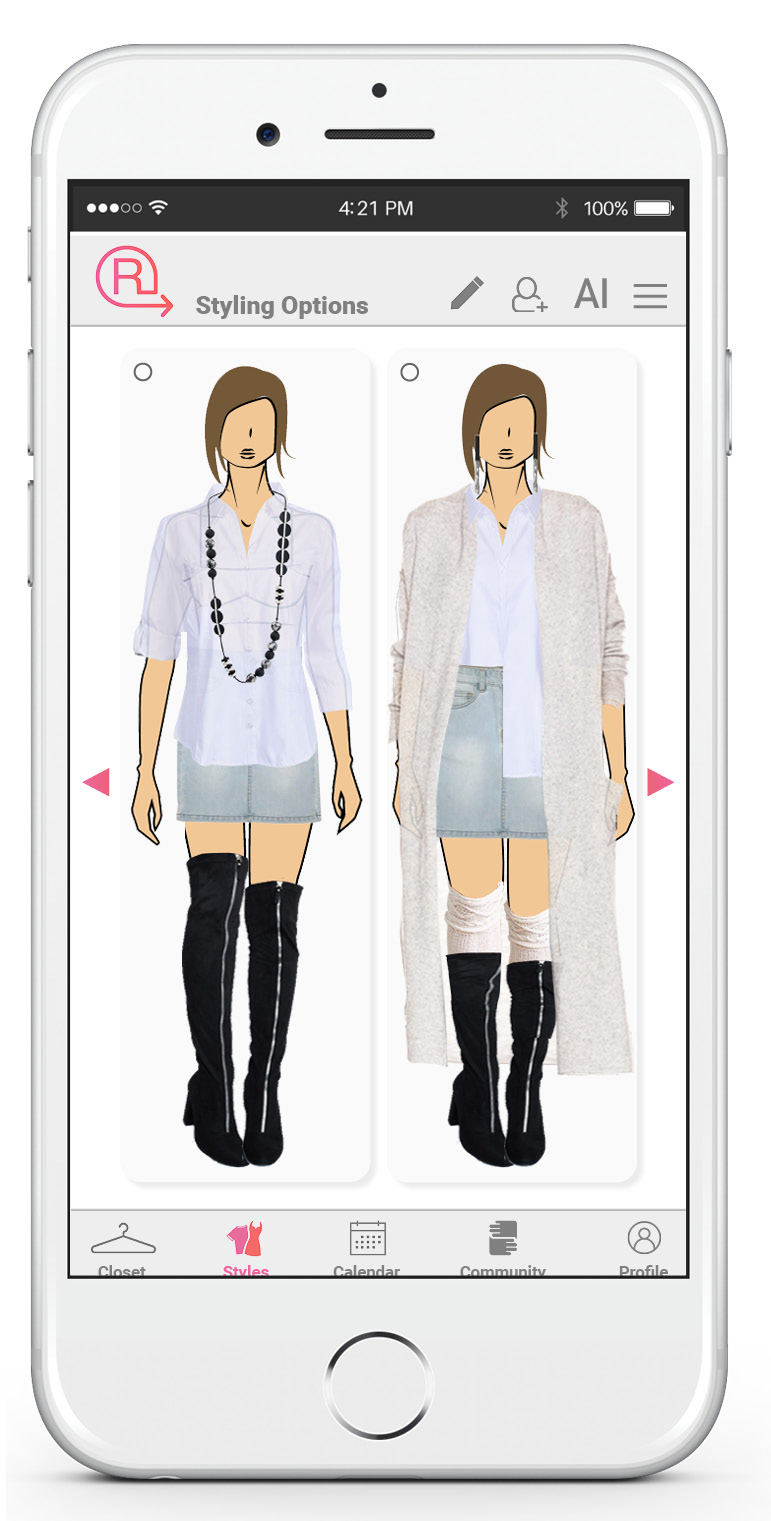
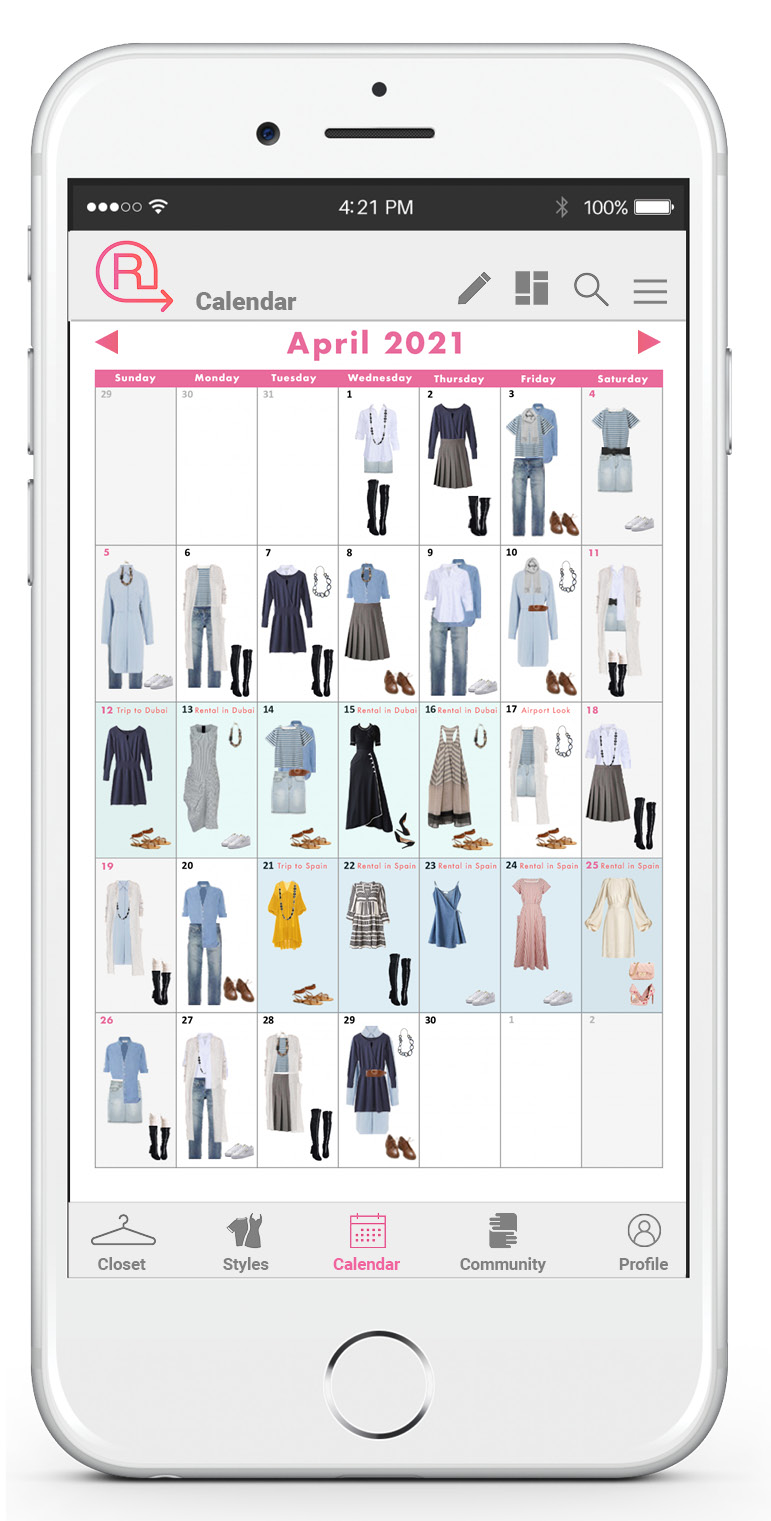

Pre-Schedule the Styles:
Users can also plan/schedule their wardrobe in advance and sync to the calendar if they dislike making those decisions daily or for upcoming occasions.

Information and Updates:
Thinking ahead, the platform can become a way for other sustainable stakeholders to participate in this ecosystem while keeping consumers on track.
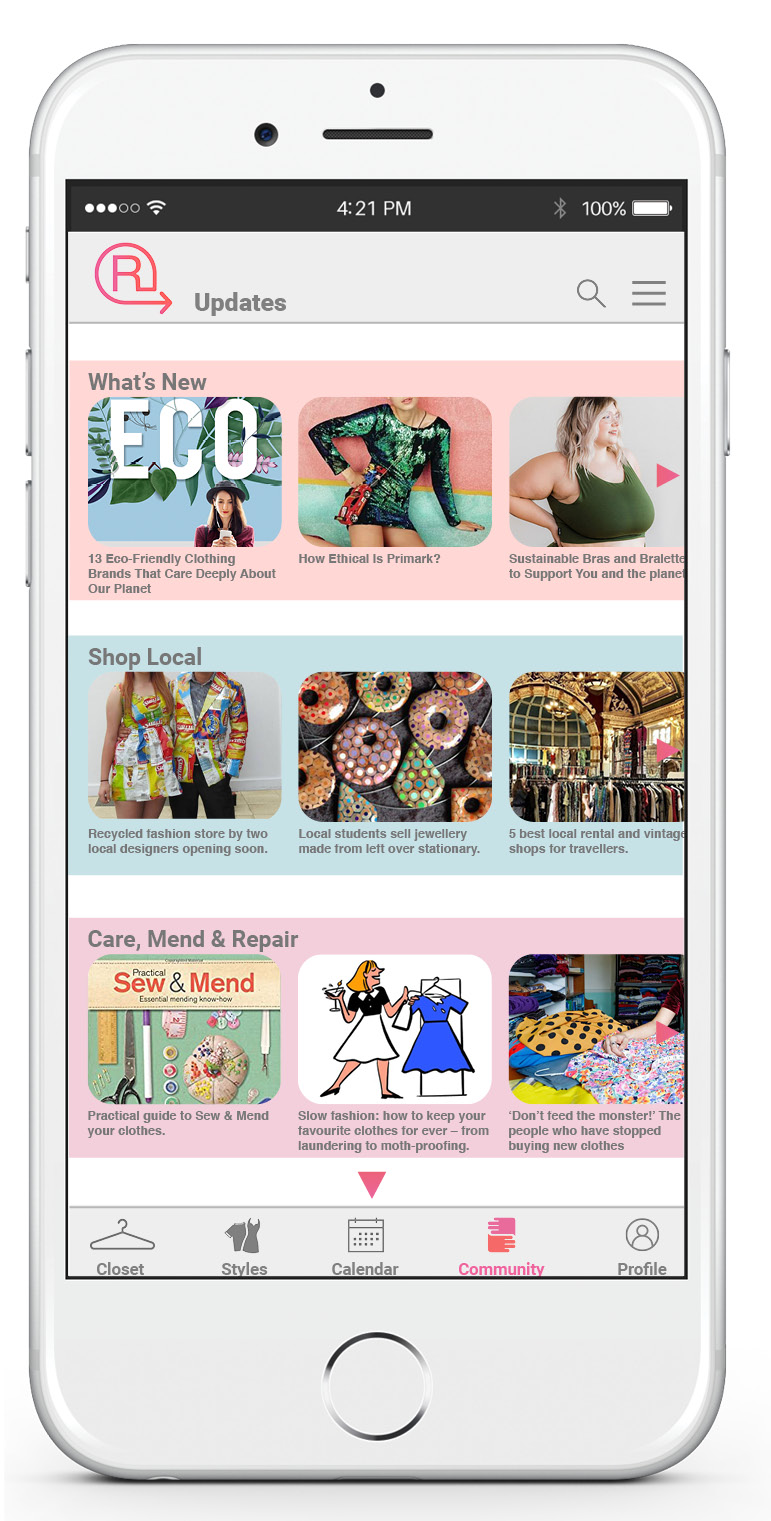
Future Stakeholders:
The future stakeholders can be stylists, businesses selling sustainable clothes and/or accessories, or even tailors, etc who can help you take care of your clothes longer. This will not only help generate a new economy for people who like to mend, refurbish, or tailor fabrics, but over time also help users take better care of their clothes.
It is time to have a different relationship with our clothes.
Reflection:
Participant selection: We initially interviewed GenZ all over the world (due to the lockdown we were reaching out to our networks). But I realized if our design was for the UK we must interview participants based here to gain contextual insights.
Reward rather than Shame: When we asked the participants to give a rough estimate of the clothes they own, and then asked them to actually count their clothes. Almost everyone underestimated the number of clothes they owned – and some were ashamed to count their clothes. Rewarding them for owning less would be a better strategy than shaming them for having more.
Brainstorming: The best ideas came about when the group members had unique ideas of their own and were able to combine, refine and build on them together. Different interesting aspects from multiple ideas were refined to build different models, systems, and interactions.
Less is more: When we tried to add too many functions to the app it was confusing for the users and us. It was best to add the most important features first and then add on the ones that the users ask or need.
